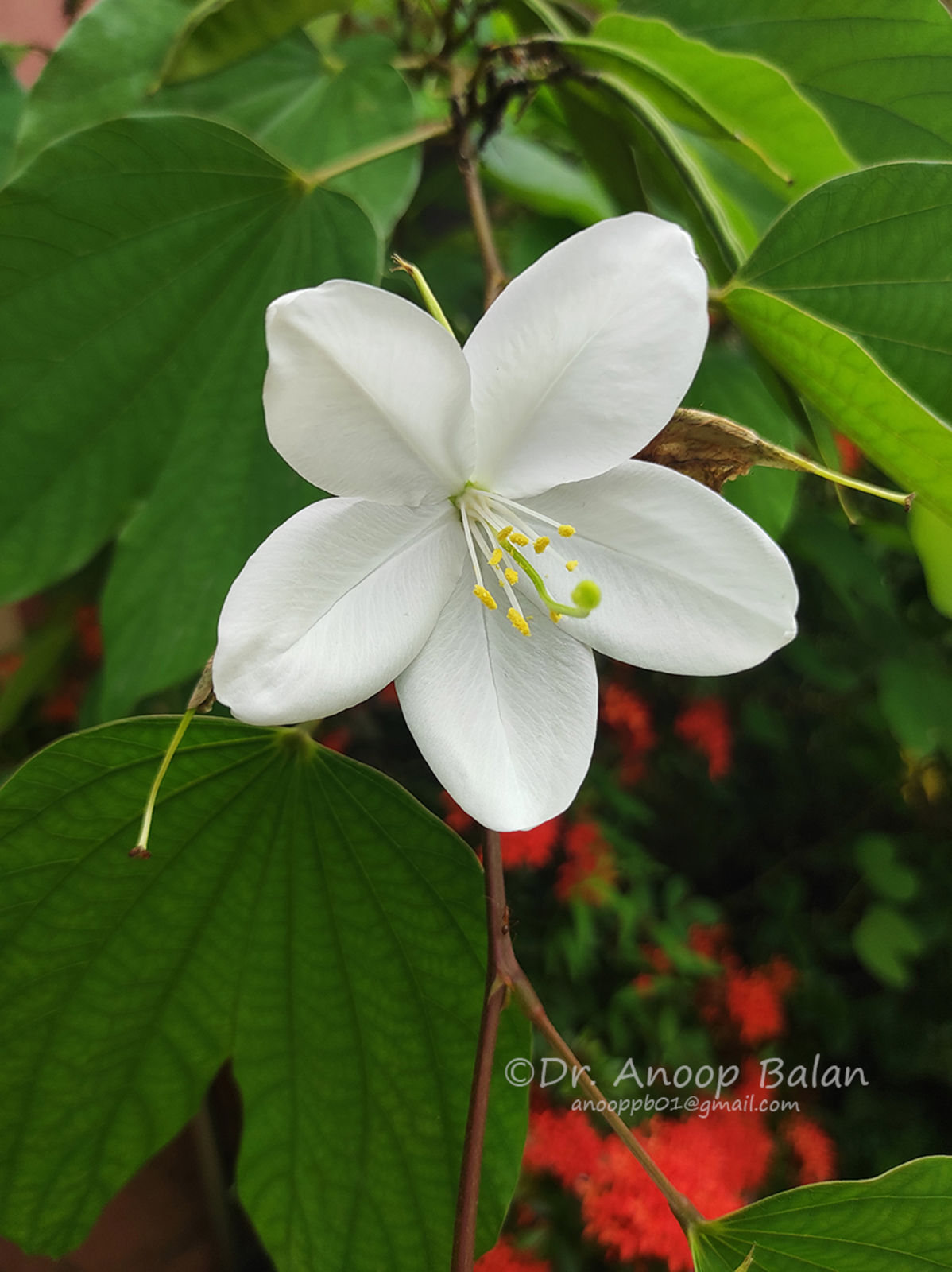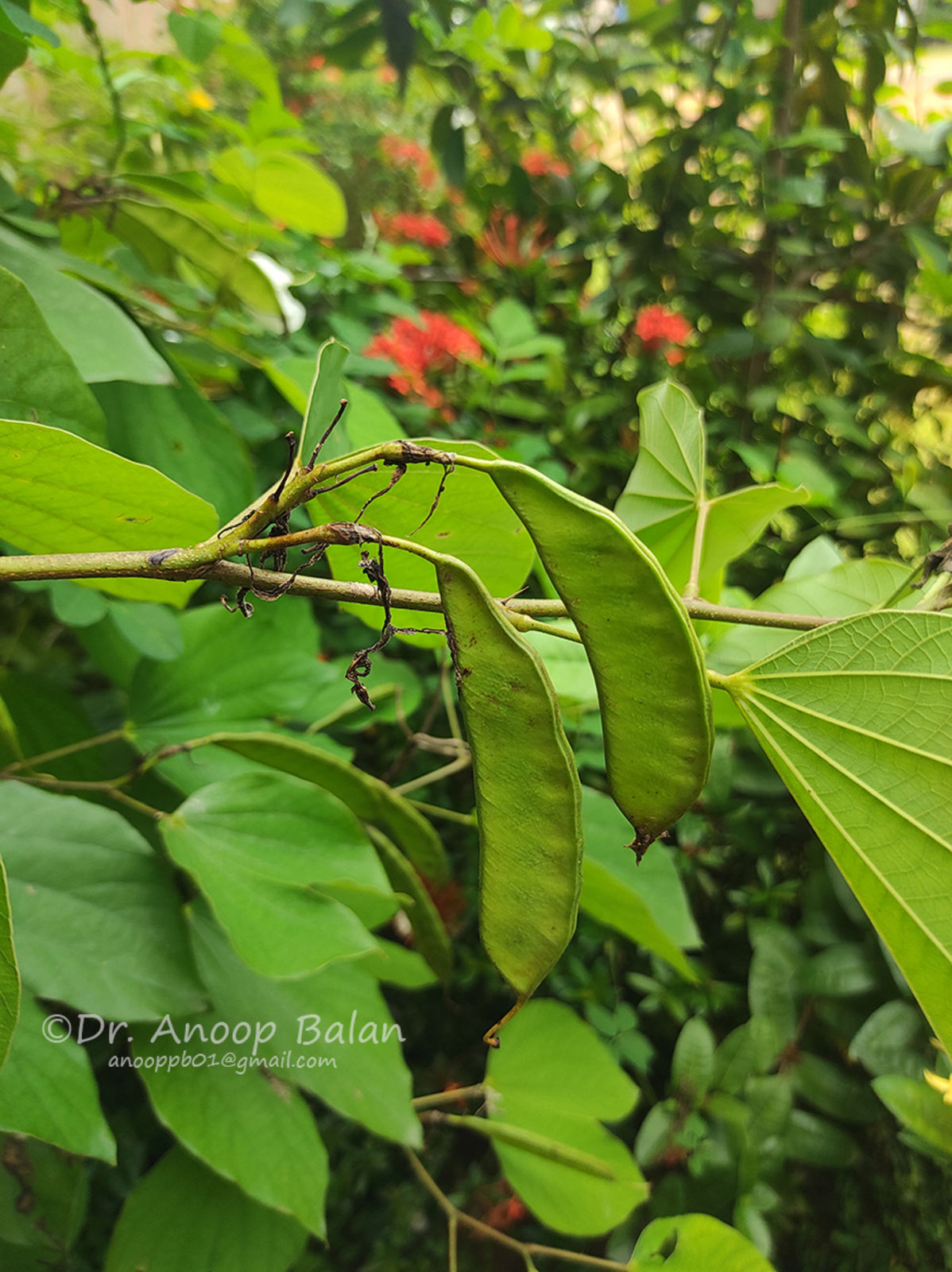White Bauhinia, White Camel's Foot
bauhinia acuminata
Also known as: ["White Camel's Foot","Dwarf Camel's Foot"]
Overview
A small deciduous tree or shrub native to Southeast Asia, known for its delicate white flowers resembling orchids.
Benefits & Perks
["fragrant flowers","wildlife attractant (bees, butterflies, birds)","aesthetic foliage"]
Botanical Classification
| Phylum: | Magnoliophyta |
| Class: | Magnoliopsida |
| Order: | Fabales |
| Family: | Fabaceae |
| Genus: | Bauhinia |
| Botanical Name: | Bauhinia acuminata |
Plant Characteristics
Basic Information
- Category: Flowers
- Suitable Location: outdoor garden in warm climates, or as a potted plant in temperate regions
- Suitable For:
- Is Weed: No
- Allergenicity: low
Environmental Needs
- Climate: {"temperatureRange":"15–35°C"}
- Hardiness: {"zones":"9–11"}
- Misting: every 2–3 days in dry climates, rarely required otherwise
- Drainage: Fast-draining to prevent waterlogging and root rot.
- Soil Type: Well-draining potting mix with added perlite or sand; can include orchid bark for aeration.
Maintenance Level
- Maintenance Level: moderate
- Toughness Level: moderate
- Pruning Frequency: Annually in late winter or early spring before new growth begins; light pruning can be done after flowering if needed.
- Pruning Intensity: Moderate; remove up to one-third of old growth if necessary, but avoid heavy pruning unless rejuvena
Care Details
Ideal Sunlight Coverage:
Bright indirect light for 6–8 hours daily; can tolerate full sun with gradual acclimation, especially in cooler climates.
Sunlight Tolerance Tips:
Acclimate to full sun slowly over 1–2 weeks, protect from intense midday sun to prevent scorching, adjust light exposure based on indoor vs. outdoor placement.
Care Requirements
Care Difficulty
moderatemoderate
Sunlight
full sun to partial shade
Rotate plant weekly for even growth; use sheer curtains to filter intense sunlight; avoid placing near west-facing windows in summer.
Watering
every 7–10 days during active growth, reduce in winter
Water thoroughly until it drains from the bottom, allow soil to dry between waterings, avoid overwatering especially in winter.
Soil
well-draining, loamy soil with organic matter
pH: Slightly acidic to neutral (pH 6.0–7.0).
Ensure pots have drainage holes; avoid heavy clay soils; top-dress with compost annually.
Temperature
Prefers 65–85°F (18–29°C); can tolerate brief dips to 50°F (10°C) but thrives in warm conditions.
Avoid sudden temperature changes; protect from cold drafts; maintain consistent warmth during active growth.
Fertilizing
every 4–6 weeks during growing season with balanced liquid fertilizer
Fertilize only during active growth; flush soil occasionally to prevent salt buildup; use a balanced formula for flowering plants.
Propagation
Methods
Stem cuttings or layering; stem cuttings are more common for home growers.
Step-by-Step Propagation Guide
- Take a 4–6 inch cutting below a node, remove lower leaves, dip in rooting hormone, plant in moist medium, cover with a plastic bag to retain humidity.
Best Time: Spring or early summer when the plant is actively growing.
Environment
High humidity (70–90%), warm temperatures (75–85°F or 24–29°C), indirect light.
Medium
Well-draining mix of peat, perlite, and sand or a standard cactus mix.
Hormone
Recommended to use rooting hormone powder or gel for faster root development.
Timeline
Roots typically form in 4–8 weeks; new growth may appear after 2–3 months.
Tools Needed
Pruning shears, rooting hormone, plastic bag or propagator, well-draining medium.
Quick Tips
Keep soil consistently moist but not waterlogged; provide bottom heat if possible; avoid direct sunlight during rooting.
Pruning & Repotting
Pruning Guide
Method
Use clean cuts just above a leaf node or branch junction; remove crossing or inward-growing branches to improve air circulation.
Pruning Plan
Prune to maintain shape, encourage bushier growth, and remove dead or diseased wood; focus on structural improvement and flowering promotion.
Tools
Pruning shears, loppers (for larger branches), disinfectant (e.g., rubbing alcohol), gloves.
Checklist
Disinfect tools, prune during dormancy, make clean cuts, remove dead/diseased wood, shape as desired.
Repotting Guide
Best Season
Early spring before the active growing season begins.
Pot Size
Increase pot size by 2–3 inches in diameter; ensure the new pot has drainage holes.
Method
Remove plant gently, trim any circling roots, place in a slightly larger pot with fresh well-draining soil, water thoroughly after repotting.
Suggestions
Repot every 2–3 years or when roots fill the pot; beneficial for younger plants to encourage growth and flowering.
Checklist
Check root bound status, prepare new pot with drainage, trim roots if necessary, use fresh soil, water after repotting.
Advanced Care Tips
Watering Mastery
Watering Checklist
Check soil moisture, water deeply, ensure drainage, adjust for season.
How to Apply Water Properly
Water directly at the root zone, ensure water penetrates deeply to reach the root ball, allow excess water to drain completely, water in the morning to reduce evaporation and fungal risk.
Watering Schedule Tips
Water deeply once the top inch of soil is dry; reduce frequency in winter to prevent root rot.
Soil Improvement
Add perlite or coarse sand for drainage, incorporate organic matter like compost for fertility, use orchid bark for aeration.
Temperature Stress Management
Signs of Temperature Issues
Chlorosis or leaf drop in cold stress; wilting or leaf scorch in excessive heat.
Cold Stress
Slows growth, may cause leaf drop, increases susceptibility to root rot due to reduced metabolic activity.
Solution: Move to a warmer location, protect from drafts, reduce watering in cold periods, use a space heater if necessary.
Hot Stress
Leaves may wilt, scorch, or drop; growth may slow due to excessive transpiration.
Solution: Provide shade during peak heat, increase humidity with misting or pebble trays, ensure adequate watering, avoid fertilizing during heatwaves.
Fertilizing Guide
Fertilizing Checklist
Check growth phase, dilute fertilizer, apply to moist soil, avoid contact with roots.
Fertilizing Method
Use balanced liquid fertilizer diluted to half strength every 4–6 weeks during spring and summer; avoid fertilizing in fall and winter.
Common Problems & Solutions
Toxicity Warning
Cats
Slightly ToxicCats may experience mild gastrointestinal issues if they ingest Bauhinia acuminata seeds or pods. While not highly toxic, the plant can cause discomfort and should be kept out of reach of cats.
⚠️ Symptoms:
🌿 Toxic Parts:
⚡ Toxic If:
if eaten
Dogs
Slightly ToxicIn dogs, ingestion of Bauhinia acuminata seeds and pods can lead to mild gastrointestinal upset. The plant is not highly toxic to dogs but can cause discomfort if consumed in large amounts.
⚠️ Symptoms:
🌿 Toxic Parts:
⚡ Toxic If:
if eaten
Humans
Slightly ToxicBauhinia acuminata contains toxic compounds, primarily in its seeds and pods, which can cause mild to moderate gastrointestinal distress upon ingestion. The plant's toxicity is not severe but can lead to discomfort if consumed in significant quantities.
⚠️ Symptoms:
🌿 Toxic Parts:
⚡ Toxic If:
if eaten
Frequently Asked Questions
Q: Does Bauhinia acuminata require full sun?
A: Yes, it thrives in full sun to partial shade.
Q: How often should I water Bauhinia acuminata?
A: Water moderately, allowing the soil to dry slightly between waterings.
Q: Is Bauhinia acuminata suitable for container gardening?
A: Yes, it can be grown in large containers but may require pruning to control size.
Quick Reference
| Family: | Fabaceae |
| Care: | moderate |
| Light: | full sun to partial shade |
| Water: | every 7–10 days during activ |
Get Expert Care Tips
Download the Plantious app for personalized care reminders and plant identification!
Google Play App Store








